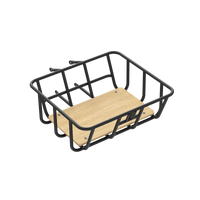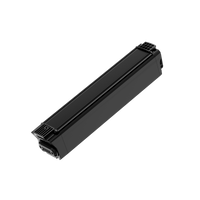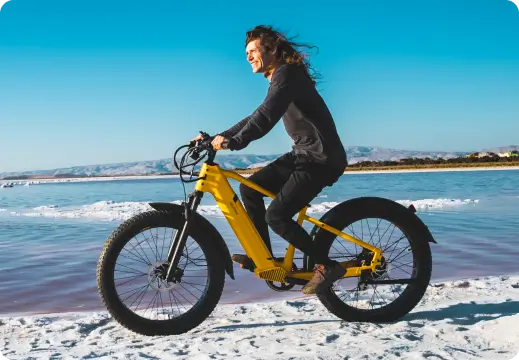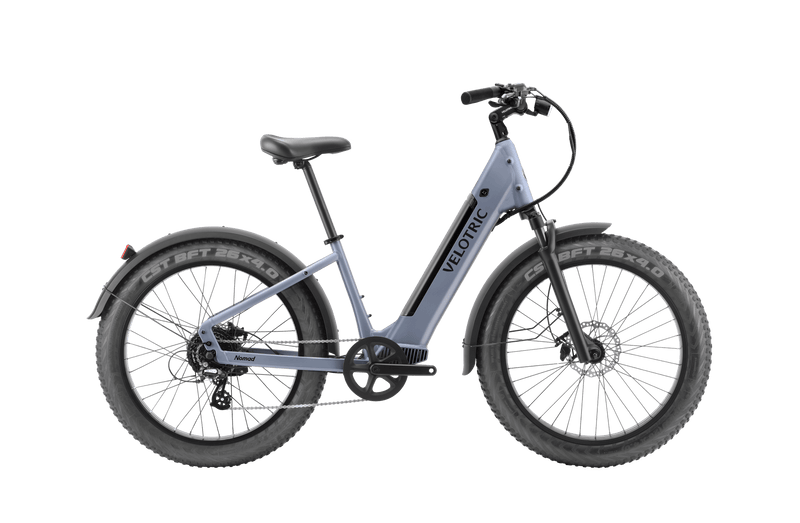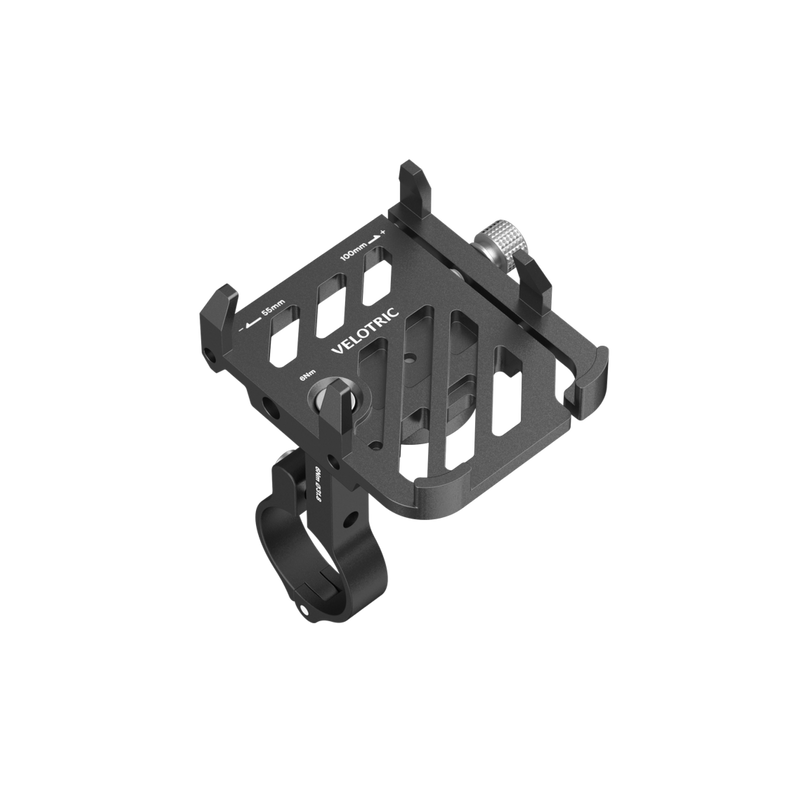When investing in an e-bike, you've got to know how well it can handle different environmental conditions. That's where the IPX rating comes in. This article will discuss the IPX rating, its importance for e-bikes, the ideal IPX rating for most users, and precautions to take when riding an IPX6-rated e-bike.

About IPX Rating Level
The IPX rating is a standardized measure used to define the level of protection an electronic device has against intrusion from water and dust. "IP" stands for Ingress Protection, and the "X" denotes the specific resistance level. The IPX rating primarily focuses on protection against water, with levels ranging from 0 to 8.
- IPX0: No protection against water.
- IPX1: Protection against vertically dripping water.
- IPX2: Protection against vertically dripping water when tilted up to 15 degrees.
- IPX3: Protection against water spray at up to 60 degrees from vertical.
- IPX4: Protection against water splashes from any direction.
- IPX5: Protection against water jets from any direction.
- IPX6: Protection against powerful water jets from any direction.
- IPX7: Protection against immersion in water up to 1 meter for 30 minutes.
- IPX8: Protection against continuous immersion in water beyond 1 meter.
For e-bikes, this rating helps determine how well the bike's electrical components are protected from water damage, which is vital for maintaining performance and longevity.
Why the IPX Rating Is Important to an E-bike
The IPX rating is crucial for e-bikes due to their exposure to various environmental elements. Unlike traditional bikes, e-bikes have electrical components such as batteries, motors, and controllers that are sensitive to water and dust.
Protection of Electrical Components
E-bikes rely on sophisticated electrical systems to function. These systems include the battery, motor, display, and various sensors, all of which are vulnerable to water and dust. When these components come into contact with water or dust, it can cause short circuits, corrosion, or other forms of damage. A high IPX rating ensures that these components are protected from such hazards. For instance, an e-bike with an IPX6 rating can handle powerful water jets, which means it can withstand heavy rain without the electrical system getting damaged. This protection is crucial for maintaining the bike's functionality and reliability, especially in adverse weather conditions.
Longevity and Durability
Investing in an e-bike is not a small expense, and users expect their e-bikes to last for several years. The IPX rating plays a significant role in the longevity and durability of an e-bike. Bikes with higher IPX ratings are designed to resist water and dust penetration, which helps prevent long-term damage to the electrical components. This resistance reduces the frequency of repairs and replacements, thereby lowering maintenance costs over time. By choosing an e-bike with a high IPX rating, you ensure that your bike can withstand the rigors of daily use, whether you're commuting in the rain or riding through dusty trails.
Performance
Consistent performance is essential for e-bike users, regardless of whether they use their bikes for daily commuting, leisure rides, or rigorous off-road adventures. An e-bike with a high IPX rating maintains its performance even in challenging conditions. For example, an IPX6-rated e-bike will continue to operate efficiently in wet weather, providing the same level of power and control as it would in dry conditions. This reliability ensures that riders can depend on their e-bikes to perform well, no matter the weather, which is particularly important for those who rely on their e-bikes for transportation or physical activity.
Riders' Safety
Electrical failures can pose serious risks, including the possibility of electrical shocks or fires. An e-bike with a high IPX rating minimizes these risks by protecting the electrical components from water and dust ingress. This protection helps prevent short circuits and other electrical issues that could lead to accidents. Moreover, a reliable IPX rating means that the bike's electrical system is less likely to fail unexpectedly, ensuring a safer riding experience for the user. By choosing an e-bike with a robust IPX rating, riders can have peace of mind knowing that their bike is safe to use in various weather conditions.
In summary, the IPX rating is vital for e-bikes because it ensures the protection of electrical components, enhances longevity and durability, maintains consistent performance, and upholds safety standards.
Ideal IPX Rating for the E-bike
For most e-bike users, an IPX6 rating is considered ideal. Why?
- Protection Against Powerful Water Jets: IPX6-rated e-bikes can handle powerful water jets from any direction, which means they can withstand heavy rain and wet conditions without compromising their electrical components.
- Versatility: This rating provides a good balance between protection and practicality. It is sufficient for everyday riding scenarios, including unexpected showers or splashes, without needing the extreme measures required for higher ratings like IPX7 or IPX8.
- Cost-Effectiveness: Achieving higher IPX ratings often involves more complex and expensive engineering solutions. IPX6 provides robust protection without significantly increasing the cost of the e-bike.
Overall, an IPX6 rating ensures your e-bike remains functional and safe under most weather conditions you are likely to encounter, making it a reliable choice for most riders.
Best IPX6 E-Bike: Velotric Discover 2 E-Bike
The Velotric Discover 2 E-Bike excels in waterproofing with its IPX6 rating, ensuring robust protection against powerful water jets. Additionally, its battery boasts an IPX7 rating, offering superior resistance to water immersion. This makes the Discover 2 highly reliable for riding in wet conditions. Suitable for riders from 4'11" to 6'4", it features a powerful 750W motor, 705.6Wh battery, and a range of up to 75 miles. Enhanced with hydraulic suspension, ergonomic design, and 2.4" tires, it ensures a smooth ride. Safety is prioritized with 180mm hydraulic disc brakes and Apple Find My integration. The Velotric app allows for customizable riding modes, making the Discover 2 an ideal choice for all-weather performance.

What To Avoid When Riding IPX 6 E-bikes
While an IPX6 rating offers substantial protection, it's essential to understand its limitations to avoid damaging your e-bike:
1. Prolonged Exposure to Heavy Rain
Although an IPX6 rating means your e-bike can handle powerful water jets, prolonged exposure to heavy rain should be avoided. Continuous heavy rain can eventually penetrate seals and cause damage. For example, riding in a torrential downpour for an extended period might lead to water seeping into the motor or battery compartment, which could cause corrosion or short-circuiting. It's best to seek shelter or limit your riding time in such conditions to prevent long-term damage.
2. Submersion
IPX6 does not protect against submersion. Avoid riding through deep water or allowing the e-bike to be submerged, as this can lead to significant water damage to the electrical components. For instance, riding through flooded areas where water levels are higher than the bottom bracket or motor housing can result in water ingress. This can damage the battery, motor, and other sensitive electronics. Always check the depth of water before riding through it and avoid any situation where the e-bike could be submerged.
3. High-Pressure Cleaning
While washing your e-bike, avoid using high-pressure water jets directly on the electrical parts. High-pressure streams can force water into seals and gaps, leading to internal damage. Instead, use a gentle spray or a damp cloth to clean these areas. For instance, when cleaning the motor casing or battery compartment, a low-pressure garden hose or a bucket of water and a sponge are safer options. This approach prevents water from being driven into vulnerable areas and maintains the integrity of the seals.
4. Storage in Wet Conditions
When not in use, store your e-bike in a dry place. Prolonged exposure to moisture, even when not riding, can lead to corrosion and other damage. For example, parking your e-bike in a damp garage or leaving it outside in the rain can result in rust forming on metal parts and water seeping into the electrical components. To avoid this, store your e-bike indoors in a dry environment or use a waterproof cover if outdoor storage is unavoidable. Ensuring your storage area is well-ventilated can also help prevent moisture buildup.























